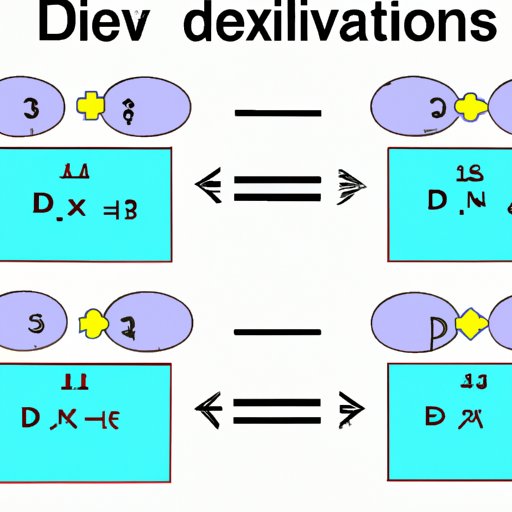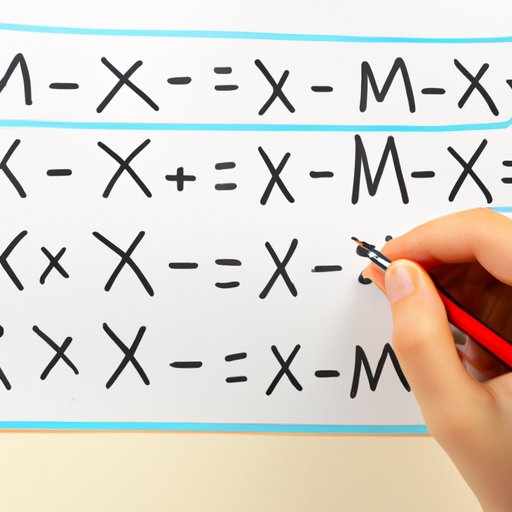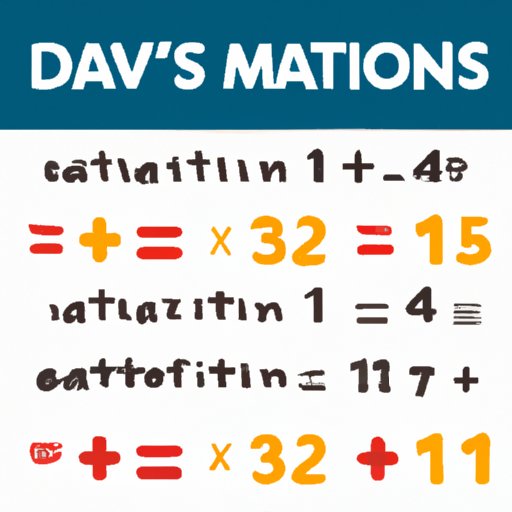Introduction
Division is an essential math skill that helps us understand how to divide large numbers into smaller parts. It’s an important concept that has many applications in everyday life, such as calculating how much money each person should get when splitting a restaurant bill or figuring out how many slices of pizza each person can have. In this article, we’ll provide a step-by-step guide on how to solve division problems.
Creating a Step-by-Step Guide to Solving Division Problems
To effectively teach students how to solve division problems, it’s important to create a clear and concise step-by-step guide. This will give students the structure they need to work through the problem and ensure they don’t get lost along the way. Here are some tips for creating a helpful guide:
Understanding the Basic Process
Before diving into the details, it’s important to understand the basic process of division. As Stanford University professor Jo Boaler explains, “Division is the inverse of multiplication. It means breaking a number up into equal groups.” Once students understand this core concept, they’ll be able to better understand the steps involved in solving division problems.
Breaking the Problem Down into Smaller Steps
When teaching division, it’s important to break the problem down into smaller, more manageable steps. For example, rather than presenting students with a long division problem all at once, it may be helpful to start by having them practice dividing single-digit numbers. This will help them build confidence before tackling more complex problems.
Using Visual Aids to Demonstrate the Process
Visual aids can be incredibly helpful when teaching division, as they provide a visual representation of the process. For instance, using pictures of pizza slices or other objects to illustrate how division works can help students better understand the concept.

Using Examples to Illustrate the Process of Division
Once students understand the basic process of division, it’s important to provide examples of how to solve division problems. This will help students apply their knowledge and gain a deeper understanding of the concept.
Selecting Appropriate Examples
When selecting examples, it’s important to select ones that are appropriate for the student’s current level. For instance, if the student is just beginning to learn division, it may be helpful to start with simple examples involving single-digit numbers. As the student’s skills improve, more complex examples can be introduced.
Explaining the Steps Needed to Solve Each Example
In addition to selecting appropriate examples, it’s important to explain the steps needed to solve each example. This will help students understand how to approach division problems and ensure they don’t get stuck along the way.

Explaining Common Mistakes and How to Avoid Them
Division can be tricky, and it’s common for students to make mistakes. To help students avoid making errors, it’s important to explain the most common mistakes and how to avoid them.
Identifying Common Mistakes
The first step is to identify the most common mistakes students make when solving division problems. According to a study published in the Journal of Education and Human Development, some of the most common mistakes include misreading the problem, incorrectly setting up the problem, and making careless errors. Once these mistakes are identified, it’s important to explain how to avoid them.
Showing How to Use Double-Checking Techniques to Avoid Mistakes
One way to help students avoid making mistakes is to show them how to use double-checking techniques. This could involve having them read the problem twice before beginning, checking their work after each step, and asking a classmate to review their work. By taking the time to double-check their work, students can help ensure they don’t make any costly errors.

Showing How to Check Answers Using Multiplication
Once students have completed a division problem, it’s important to show them how to check their answers. One way to do this is to demonstrate how to use multiplication to check answers. This will help students better understand the relationship between multiplication and division.
Explaining the Concept of Reversing a Division Problem
The first step is to explain the concept of reversing a division problem. As Professor Boaler explains, “If you know the answer to a division problem, you can reverse it and turn it into a multiplication problem.” Once students understand this concept, they’ll be able to use multiplication to check their answers.
Demonstrating How to Use Multiplication to Check Answers
The next step is to demonstrate how to use multiplication to check answers. This could involve providing examples and having students practice using the technique to check their answers. This will help students gain confidence in their ability to accurately check their work.
Demonstrating Strategies for Working With Fractions and Decimals
It’s also important to demonstrate strategies for working with fractions and decimals. This will help students understand how to divide these types of numbers and apply their knowledge in real-world situations.
Showing How to Convert Fractions and Decimals to Whole Numbers
The first step is to show students how to convert fractions and decimals to whole numbers. This could involve providing examples and having students practice converting numbers. This will help them understand how to approach these types of problems.
Explaining How to Divide Fractions and Decimals
Once students understand how to convert fractions and decimals to whole numbers, it’s important to explain how to divide them. This could involve providing examples and having students practice dividing these numbers. This will help them gain confidence in their ability to accurately divide fractions and decimals.
Conclusion
Division is an essential math skill that helps us understand how to divide large numbers into smaller parts. By following the steps outlined in this article, teachers can provide students with a clear and concise guide on how to solve division problems. This includes explaining the basic process, breaking the problem down into smaller steps, using visual aids to demonstrate the process, providing examples to illustrate the process, explaining common mistakes and how to avoid them, showing how to check answers using multiplication, and demonstrating strategies for working with fractions and decimals. With this guide, students will be well on their way to mastering division.
(Note: Is this article not meeting your expectations? Do you have knowledge or insights to share? Unlock new opportunities and expand your reach by joining our authors team. Click Registration to join us and share your expertise with our readers.)
